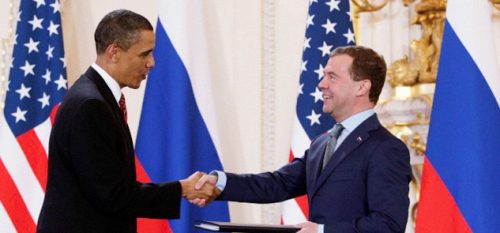
Looking Forward: What comes after New START?
Seven years have passed since President Barack Obama signed New START into force. The importance of the treaty, however, must be highlighted now more than ever. The United States is at a crossroads in its relationship with the Russian Federation. Tensions have steadily increased in recent years, attributed to acts of Russian aggression, including the annexation of the Crimean Peninsula in 2014, their unwavering support of the Assad regime in the Syrian conflict, and recent alleged involvement in the US and other foreign elections. These instances have strained diplomatic relations between the two states and have inhibited joint progress on a multitude of issues. New START reflects the kind of bilateral effort missing from the US-Russia relationship today. The treaty, therefore, should be replaced when it expires in 2021, or extended per the protocol highlighted in Article XIV of the treaty.
President Trump’s description of the treaty as “another bad deal” undermines the integrity of the treaty and its indisputable importance to national security.
The American Security Project supports New START as a significant milestone in the reduction of nuclear arms. The treaty has undoubtedly made our country and the world a safer place. The treaty restricts the number of strategically deployed warheads and sets a limit on the number of deployed and non-deployed ICBMs, SLBMs, and bombers. By 2018, the United States and Russia agreed to decrease their number of deployed strategic warheads to 1550. It also limits the number of deployed ICBMs, SLBMs, and heavy bombers to 700. These reductions must be enacted by 2018 at the latest. Furthermore, a robust verification system within the treaty includes two different types of inspections – 18 a year – to ensure the compliance of both sides. Reports are subsequently recorded for each respective government that contain the aggregate numbers of strategic offensive arms possessed by the other side.
Room for further reductions exist and should be considered as the date of expiration for the treaty is nearing. New START has had great success so far and both parties can agree to further reductions without compromising nuclear deterrence. The number of deployed strategic warheads could be decreased to about 1000 by a certain year, mirroring the same format as New START. Furthermore, reductions in the number of deployed ICBM, SLBM, and bombers should also be considered.
With a post-New START nuclear arms treaty, the first objective should be a reduction of arms to ultimately decrease the threat of a nuclear conflict. Because of the sensitive nature of nuclear-related issues, political agendas should be tabled to ensure the success of negotiations. The end goal for both the United States and Russia is to craft a deal they deem beneficial for their respective security goals. This mutual interest, therefore should motivate the United States and Russia to maintain a cordial relationship to forge a deal satisfactory for both parties. While the United States and Russia appear more divided than ever, both adversaries can find common ground to create a new nuclear deal that continues the historical precedent of reducing nuclear weapons and maintaining transparency. If the Cuban Missile Crisis taught the world anything, it’s that nuclear arms are one issue not worth politicizing.
Negotiations regarding a new agreement should be well under way by the expiration date of New START, regardless of the treaty’s extension. If the United States and Russia agree to extend the treaty, both parties receive more time to develop a comprehensive deal without inhibition. The United States should be willing to reassure its NATO allies and other key strategic partners of its commitment by pursuing a replacement agreement or extension, and not letting the treaty lapse.





